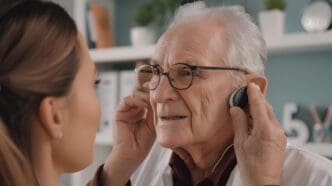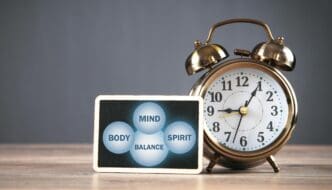Ankylosing spondylitis (AS) is a type of arthritis that primarily affects the spine. It can cause inflammation leading to severe, chronic pain and discomfort. Traditional treatments include medications and surgery, but many look to complementary therapies for additional relief. These alternatives aren’t replacements but can offer supplementary benefits.
With various therapies available, distinguishing effective methods from myths is essential. Acupuncture, massage, and meditation are popular options. While these therapies are less studied than conventional medical treatments, they can help manage symptoms. Understanding these complementary treatments can empower individuals to make informed decisions about their health.
Understanding Ankylosing Spondylitis
AS is part of a group of diseases called spondyloarthritis. It mainly affects the spine, but can also impact other body parts. The disease progresses as new bone forms, causing parts of the spine to fuse. This fusion leads to reduced flexibility and can affect posture.
Symptoms of AS include pain and stiffness that worsen over time. hips, ribs, shoulders, and heels might also experience discomfort. Early diagnosis and treatment are crucial. Traditional treatments involve medications and physical therapy.
Role of Complementary Therapies
Complementary therapies aim to alleviate symptoms not fully addressed by standard treatments. They don’t cure AS but can enhance quality of life.
Acupuncture, for instance, has shown promise for some patients. It involves inserting thin needles into specific body points to relieve pain. Meditation can also help manage stress and improve overall well-being.
Acupuncture and Its Benefits
Acupuncture is a traditional Chinese medicine practice. It’s been used for centuries to treat various ailments.
Studies suggest acupuncture might help reduce AS pain and improve function. It stimulates nerves, muscles, and connective tissues, promoting the body’s natural painkillers.
While not everyone experiences relief, acupuncture is generally considered safe when performed by a trained professional.
Massage Therapy
Massage therapy can ease tension and improve circulation. It’s widely used for musculoskeletal issues, including AS.
Regular massage sessions might reduce pain and stiffness. Techniques vary, so it’s important to work with a knowledgeable therapist.
Always discuss with a healthcare provider before starting any new therapy.
The Potential of Hypnosis
Hypnosis is less conventional in pain management but offers benefits for some.
It can alter the perception of pain and improve relaxation. Trained hypnotherapists guide patients into a trance-like state, focusing them away from pain.
Hypnosis requires an open mind and trust in the practitioner.
It’s not a mainstream treatment but can be part of a comprehensive approach.
Yoga and Stretching
Yoga combines physical postures, breathing exercises, and meditation. It’s beneficial for flexibility and stress relief.
For AS patients, yoga poses can be modified to accommodate limited mobility. This flexibility can enhance daily function.
Yoga should be practiced under guidance, especially for beginners, to prevent injury.
Many people find yoga effective in managing AS symptoms.
The Use of Meditation
Meditation is a practice of focused attention and awareness. It’s known for reducing stress and increasing mental clarity.
For those with AS, meditation can help in managing the psychological impact of chronic pain.
It can be combined with other therapies like yoga for greater effect.
Regular practice might enhance coping mechanisms during flare-ups.
Heat Therapy to Ease Pain
Heat therapy involves using warm packs or baths to relax stiff joints. It’s an accessible and inexpensive treatment often used at home.
Applying heat can improve blood flow and reduce muscle tension. It’s a simple method to supplement other therapies.
Consulting with healthcare professionals before starting heat therapy is advisable.
Heat therapy is especially useful during cold weather when stiffness increases.
Complementary therapies can play a significant role in managing ankylosing spondylitis. While not replacements for traditional methods, they offer additional tools to cope with pain.
Exploring options like acupuncture, massage, and yoga under medical guidance can lead to improved quality of life for AS patients.








